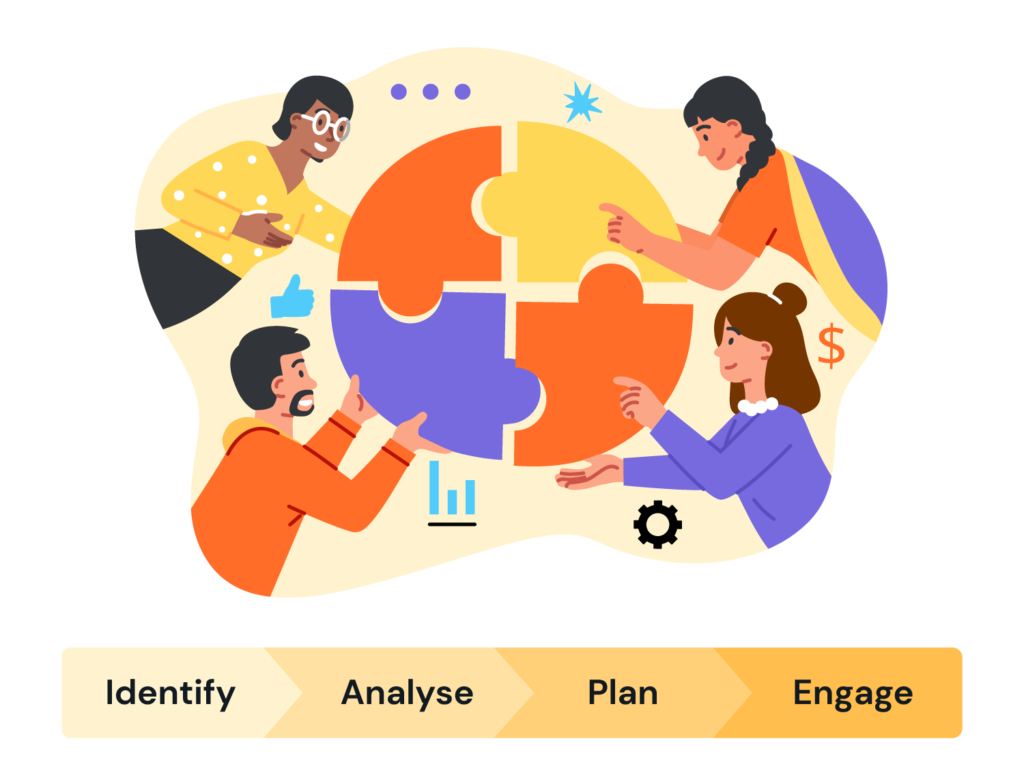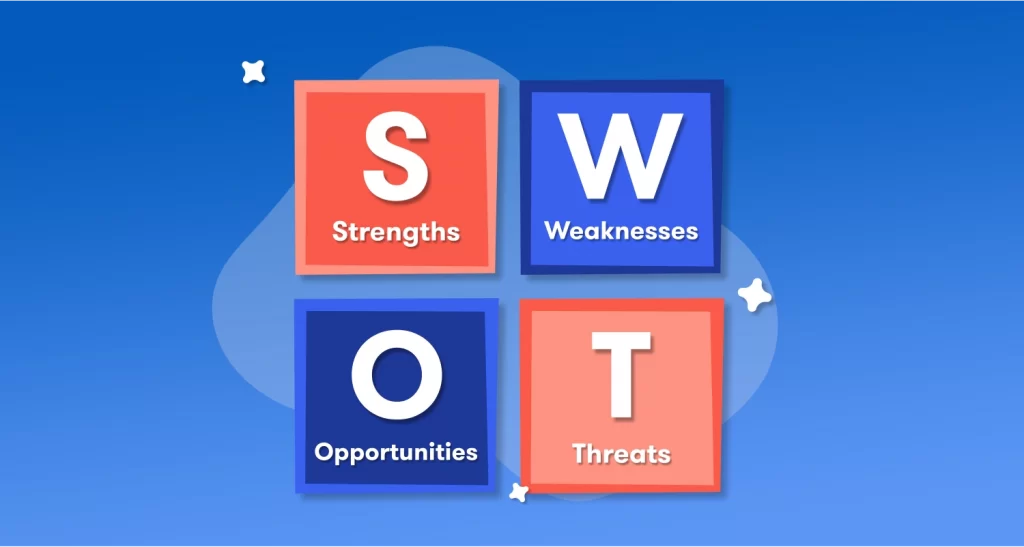This page cannot load. Please try again.

The Implementation Process of a PR Campaign
Once the planning process is complete, it’s time to move on to the implementation stage of a PR campaign. Implementation involves putting the strategies and tactics developed during the planning stage into action. In this blog post, I will discuss the implementation process of a PR campaign, including its key components, best practices, and common challenges.
Key Components of Implementation
The implementation process of a PR campaign includes several key components, including:
- Budgeting: Allocating resources to various tactics and strategies to achieve the campaign’s objectives
- Timeline: Establishing a timeline for the implementation of different tactics and strategies
- Team Roles: Defining the roles and responsibilities of team members and ensuring that they have the resources they need to execute their tasks effectively
- Measurement: Establishing metrics to evaluate the effectiveness of the campaign and its impact on the organization’s goals
Best Practices for Implementation
To ensure the success of a PR campaign’s implementation, PR professionals should follow best practices, including:
- Communication: Maintaining open communication among team members, stakeholders, and clients to ensure everyone is on the same page and progress is being made
- Flexibility: Remaining flexible and adaptable to changes that may occur during the implementation process, such as budget constraints or unexpected events
- Monitoring: Regularly monitoring the effectiveness of the campaign and making adjustments as needed to achieve the campaign’s objectives
- Evaluation: Conducting a thorough evaluation of the campaign’s effectiveness once it is complete, using data and feedback to inform future campaigns
Common Implementation Challenges
Implementing a PR campaign can be challenging, and PR professionals must be prepared to overcome obstacles that may arise, including:
- Budget Constraints: Limited budget resources may prevent the implementation of some tactics or strategies, requiring PR professionals to prioritize and find creative solutions to achieve the campaign’s objectives.
- Time Constraints: A tight timeline can add pressure and stress to the implementation process, making it difficult to ensure that all tactics and strategies are executed effectively and on time.
- Resistance to Change: Resistance to change can come from within the organization or from stakeholders, and it can make it difficult to implement new tactics or strategies or get buy-in from stakeholders.
- Lack of Resources: A lack of resources, such as staff or technology, can hinder the implementation process and prevent the campaign from achieving its objectives.

Public relations is ALL about managing relationships between an organization and its stakeholders. A good PR strategy requires not only important proactive actions, but also effective responses to crisis situations. Knowing the difference between action and response strategies and their effectiveness is imperative for an organization. I am going to touch on some action and response strategies that can be used all throughout the PR industry.
Action Strategies
- Research and Analysis
- Conduct research and analyze data to identify key stakeholders and their needs, attitudes, and behaviors
- Use the research findings to develop communication messages and strategies that resonate with the stakeholders
- Message Development and Delivery
- Develop clear, concise, and compelling messages that align with the organization’s values and goals
- Use various communication channels (e.g., social media, press releases, speeches) to deliver the messages to the stakeholders
- Relationship Building
- Cultivate positive relationships with stakeholders by engaging in two-way communication, listening to their feedback, and addressing their concerns
- Create opportunities for stakeholders to interact with the organization (e.g., events, forums, surveys)
Response Strategies
- Crisis Management
- Develop a crisis management plan that outlines the procedures and responsibilities for handling a crisis situation
- Communicate transparently and promptly with stakeholders about the crisis and the actions being taken to address it
- Reputation Management
- Monitor and analyze the organization’s reputation in the media and online
- Develop and implement strategies to enhance the organization’s reputation and address any negative publicity
- Issues Management
- Identify potential issues that may affect the organization’s reputation and develop strategies to address them proactively
- Monitor and analyze issues as they arise and respond appropriately
Barron, M., Barron, A., Resources, P. M. O., TAP-a-PM, Watt, A., Palmer, E., & Solera, J. (2014, August 14). stakeholder management. Project Management 2nd Edition. Retrieved March 23, 2023, from https://opentextbc.ca/projectmanagement/chapter/chapter-5-project-stakeholders-project-management/
Kiely, T. J. (2023, February 20). Reputation PR: Definition, strategies & examples. Meltwater. Retrieved March 23, 2023, from https://www.meltwater.com/en/blog/reputation-pr
Learning, L. (n.d.). Introduction to business. Communication Channels, Flows, Networks | Introduction to Business. Retrieved March 23, 2023, from https://courses.lumenlearning.com/suny-hccc-introbusiness/chapter/communication-channels-flows-networks/
Step-by-step guide to writing a crisis management plan. Smartsheet. (n.d.). Retrieved March 23, 2023, from https://www.smartsheet.com/content/crisis-management-plan

The public relations industry is all about building relationships with stakeholders, whether they are customers, employees, investors, or the general public. To achieve this goal, PR professionals need to set clear goals and objectives that guide their strategies and tactics. In this blog post, we will discuss the importance of goals and objectives in PR, how to set them effectively, and some examples of PR goals and objectives.
Importance of Goals and Objectives in PR
Goals and objectives are essential for effective PR planning and implementation. They serve several important purposes, including:
- Providing a clear direction for PR efforts
- Helping PR professionals measure success and demonstrate the value of their work
- Helping allocate resources effectively
- Enhancing communication and coordination among team members
How to Set Goals and Objectives in PR
To set effective goals and objectives in PR, it is important to follow some best practices, such as:
- Aligning with organizational goals: Goals and objectives should be consistent with the overall goals and mission of the organization. PR professionals should work closely with other departments to ensure alignment.
- Being specific and measurable: Goals and objectives should be specific and measurable to allow for clear evaluation of success. Use quantifiable metrics such as audience reach, website traffic, and media impressions to measure effectiveness.
- Being realistic and time-bound: Goals and objectives should be achievable within a reasonable timeframe. Set deadlines and milestones to track progress.
- Considering the audience: Goals and objectives should be tailored to the needs and interests of the target audience. Understand the audience’s demographics, attitudes, and behaviors to develop effective strategies.
Examples of PR Goals and Objectives
Here are some examples of PR goals and objectives:
- Increase brand awareness: The goal is to increase the organization’s visibility and recognition among the target audience. An objective could be to increase media coverage by 30% in the next six months.
- Enhance reputation: The goal is to enhance the organization’s reputation among stakeholders. An objective could be to increase positive sentiment about the organization on social media by 20% in the next year.
- Promote thought leadership: The goal is to establish the organization as a thought leader in the industry. An objective could be to secure at least three speaking opportunities at industry conferences in the next six months.
By following these best practices for setting goals and objectives, PR professionals can develop effective communication strategies and tactics that build lasting relationships with stakeholders and deliver measurable results.
7 unique PR goals that will get results for your clients. Jeneration Academy. (n.d.). Retrieved March 23, 2023, from https://www.jenerationacademy.com/blog/PR-goals
Creators, C. (n.d.). The PR process: R.A.C.E. Digital Marketing Agency. Retrieved March 23, 2023, from https://www.campaigncreators.com/blog/pr-process-race/
Decker, A. (2022, December 27). The Ultimate Guide to Brand Awareness. HubSpot Blog. Retrieved March 23, 2023, from https://blog.hubspot.com/marketing/brand-awareness
How to set goals and Objectives. Public Relations Sydney. (2015, May 26). Retrieved March 23, 2023, from https://publicrelationssydney.com.au/how-to-set-goals-and-objectives/

Public Relations is a vital aspect of any organization’s communication strategy. PR helps to build and maintain relationships with key stakeholders, including customers, employees, investors, and the general public. However, developing effective PR strategies can be a challenging task, especially in today’s rapidly changing communication industry. This is where applied research comes in handy!
Applied research is the systematic and scientific investigation of a specific communication problem or issue to provide insights and guidance to PR practitioners. This type of research focuses on practical applications of PR theories, models, and strategies to solve real-world problems faced by organizations, businesses, and government agencies.
Applied research in PR can help in several ways:
Understand the Target Audience
One of the key challenges in developing effective PR strategies is understanding the target audience. Applied research helps to identify the interests, attitudes, and behaviors of the target audience, which in turn helps develop communication strategies that resonate with them. This type of research can help to identify key demographics, such as age, gender, and income, as well as psychographic factors. Simple Tiger provides a great guide and how to gather information to obtain your target audience.

Develop Effective Communication Strategies
Applied research helps to identify the most effective communication channels and messaging to reach the target audience. This type of research can help to identify the most effective social media platforms, traditional media outlets, and other communication channels to reach the target audience. Additionally, applied research can help to develop messaging that is aligned with the organization’s values and resonates with the target audience. Insperity provides good examples on how to effectively communicate including:
- Keeping it real
- Being Timely
- Focusing on consistency
- Tailoring your message
- Reinforcing it
- Encouraging feedback
- Empowering your managers

Measure the Impact of Communication
Applied research helps in evaluating the effectiveness of PR efforts and in measuring the impact of communication campaigns. This type of research can help to identify the most effective metrics for measuring the impact of communication, such as reach, engagement, and sentiment analysis. Additionally, applied research can help to identify areas where PR efforts can be improved or optimized. Expedition PR explains how important it is to use hash tracking to review the effectiveness on different platforms which would help measure the impact we are looking for!

Staying Up-to-Date
As the communication landscape is constantly evolving, applied research helps PR practitioners to stay informed about the latest trends and best practices in the field. This type of research can help to identify emerging communication channels, such as new social media platforms or emerging technologies, and help PR practitioners to stay ahead of the curve. Although it can be difficult staying up-to-date in a constantly evolving world, EM Media suggests getting on social media and following different sources of media to get all information possible from every view point.

In conclusion, applied research is important in PR because it helps practitioners make informed decisions and develop effective communication strategies that can achieve their organizational goals. By understanding the target audience, developing effective communication strategies, measuring the impact of communication, and staying up-to-date with the latest trends, PR practitioners can ensure that their efforts are aligned with the organization’s objectives and are optimized for success.
3 easy ways to measure the impact of your communications campaign. Expedition PR. (2014, June 16). Retrieved February 22, 2023, from https://www.expeditionpr.com/3-easy-ways-to-measure-the-impact-of-your-communications-campaign/
Em-Media. EmMedia. (2019, November 1). Retrieved February 22, 2023, from https://weareem.com/4-tips-to-stay-up-to-date-in-a-changing-world/
Smith, S. (n.d.). How to identify your target audience in 2023: A 5-step guide. Simple Tiger. Retrieved February 22, 2023, from https://www.simpletiger.com/blog/how-to-identify-your-target-audience
Sprimont, J. (2022, October 18). Effective communication strategies: 7 ways to improve. Insperity. Retrieved February 22, 2023, from https://www.insperity.com/blog/effective-communication-strategies/
TIM CAIN Professor in education, Cain, T., & education, P. in. (2022, September 23). How teachers are really using research. Schools Week. Retrieved February 22, 2023, from https://schoolsweek.co.uk/how-teachers-are-really-using-research/

Whenever you hear the term “public,” what is the first thing that comes to mind? I would say the people around me. Publics play a much larger role when it comes to PR, marketing, etc. Publics help define the directions that organizations and corporations are going to take when it comes to their next campaigns.

There are many different characteristics that Strategic Planning for Public Relations talks about when it comes to publics. It is important for publics to be able to be categorized to help analyze which will be the best to target for your campaign. You should look at a few different things, which include:
- Distinguishable
- Homogeneous
- Importance
- Size
- Accessibility
By separating these publics, it can allow for organizations to target different ones in their own specific ways. Overall, the public is involved as one of the organization’s stakeholders. Public Engagement brings this to light in their diagram where they talk about defining the territory. Finding their specific territory allows for your organization to go more in depth with each public and what you are wanting to accomplish with them. Your publics can also include your competitors. You want to examine what they are doing differently than you and how that is overall working for them. Try to come up with new ideas that set you a part from your competitors.
Stakeholders
You want to prioritize the importance of each individual public and how they fit into your stakeholders. By making this priority list, you are able to focus on the most important publics and focus less on ones that are likely to not make much of an impact in your organization. Pavilion makes a point about communicating with your publics should be chosen by how much they interact with the company or organization. You do not want to spend a large amount of time reaching for an audience that has never interacted with your company, that should come overtime.
Planning
You hopefully have a good idea about what publics are now, so you might be asking yourself how you can begin to implement the planning for your organization to analyze their publics. It is important to set out different questions that you want to answer prior to your analysis and during. Press Page helps make things a little more bearable by helping you set up your PR planning to make sure everything works smoothly. Some basic questions can help kickstart your analysis.
- What major publics is your organization wanting to target?
- What stakeholders are you going to prioritize?
- Who are the main competitors?
These basic questions are going to start to set you and your PR plan up for success!
Sources
Know your audience: Publics and stakeholders. DINFOS Pavilion. (n.d.). Retrieved February 13, 2023, from https://pavilion.dinfos.edu/Article/Article/2339406/know-your-audience-publics-and-stakeholders/
Person, D., R., & Smith. (2017, May 18). Analyzing the publics: 5 : V5: Strategic planning for public relatio. Taylor & Francis. Retrieved February 13, 2023, from https://www.taylorfrancis.com/chapters/mono/10.4324/9781315270876-5/analyzing-publics-ronald-smith
Smith, R. D. (2021). Step 3 Analyzing the Publics. In Strategic Planning for Public Relations. essay, Routledge.
Who are the public? NCCPE. (2018, March 16). Retrieved February 13, 2023, from https://www.publicengagement.ac.uk/about-engagement/who-are-public

Analyzing organizations can sometimes not be a super fun thing to do. Sometimes your client may not be the most fun or interesting thing in your life, but that is where you can come in! Changing the perspective of the work can tremendously change the excitement of the work. Taking the time to sit back and think about what the finished product could provide for your client will help you brainstorm goals and aspirations for this company as well.
SWOT Analysis
Strengths. Weaknesses. Opportunities. Threats. What are these things and how are they going to help you analyze an organization? SWOT Analysis is one of the best starting points that help one get into smaller details of what the organization has and what they should work on. The Corporate Finance Institute focuses on the importance of a SWOT analysis for company goals and objectives.
Strengths, of course, include everything that goes right in the company. Weaknesses will be everything that seems to be falling through the cracks. Opportunities could be some of the solutions to weaknesses, but also how the company can continue to grow with the growing world around them. Threats can involve lack of employees, competitors, and government control of regulations. Consult Port gives a great step by step guide of setting up and performing a SWOT Analysis.

Organization Analysis
An in-depth review must be performed in order to have the utmost effective organization analysis. Strategic HR gives examples of the steps to go through the beginning of an org analysis which include:
- Vision
- Mission
- Strategic Goals
- Business Operations
- Organization Chart
- Etc.
An internal review with employees can be a great insight on how the company is working from the inside out and what needs to be changed. Surveys sent to employees is an easier way to get an insight with more responses rather than in depth reviews with all. Another survey could be sent to consumers to see what they see from the outside and what could be changed on the customer service side of things. I believe that it is most important to start from the inside with employees because without the employees, the company would be nothing. Making sure that your people are happy is what is going to set the positivity throughout the company.
You are wanting to push an organization to greatness. You are wanting to watch them succeed and see what the future holds as they implement these new changes to their workforce. It is amazing how an analysis can change everything about a company and how they are going to change the ways of their habits.

Decisions are hard, especially decisions that involve where you are going to work. It can be difficult to find what you feel is the perfect job for you. Someone needs to find a workplace where they feel like they belong. During the interview process the workplace might seem great, but it is hard to determine how good the working environment is until you have eyes on the inside.

Internal Environment
Internal Environment is important for a workplace because you want to find a workplace where people can work together and feel individually important to the company. Marketing91 explains how important an internal environment is throughout an organization and emphasizes how it affects employees behavior regarding the business.
Marketing91 points out a few things that internal environment can affect:
- Organizational Structure
- HR Environment
- Value System
- Corporate Culture
- Labor Management
- Etc.
An organization should know what their strength and weaknesses are as well as have a plan to focus on how to make those weaknesses better. If their issues fall within their employees or their management, they should come up with a plan on how to implement a better environment to have a healthy workplace.
External Environment
What is making an organization stand out to you aside from others? Finding a good workplace that has a good reputation within the company and with other companies is a great way to find your fit. There are going to be many different companies that essentially do the exact same thing within a surrounding area, so how are your going to differentiate one from the other when it comes to environment?
Studysmarter explains how companies with deal with external factors and how they continue to work despite the competition around them. “The external environment can affect competitiveness, budgeting, decision making, and the marketing mix,” (Par. 3).
Studysmarter lists different factors that go into a companies external environment including economic, demographic, and social factors. The website also goes into great detail of how each individual factor can affect the workplace environment.
What would the perfect workplace look like to you?
What factors of internal and external environment are most important to you?
I believe that any company can sit down and really dig deep into both environments using a SWOT analysis and finding ways to make their organization better starting from the inside and working outwards.
It has been such a joy being able to do this blog the past couple of months. This will be my last blog post for a while, but I will be back!
Public Relations Publications is when an organization has a target public that they are sending free and controlled media too.
It is so important to always know your audience and what motivates them to read the things that you are writing and sending to them. You want to make sure you are hitting all your bases while being genuine and if needed, taking responsibility for your companies actions.
When you are designing, make sure you are designing something the exhibits who you are or who your company is. You want to make sure these designs exemplify the same qualities that your company does and makes the audience interests in reading or looking at. It is important to have the mindset of what your publics are wanting to see.

Thank you for staying up-to-date with all my blogs!

